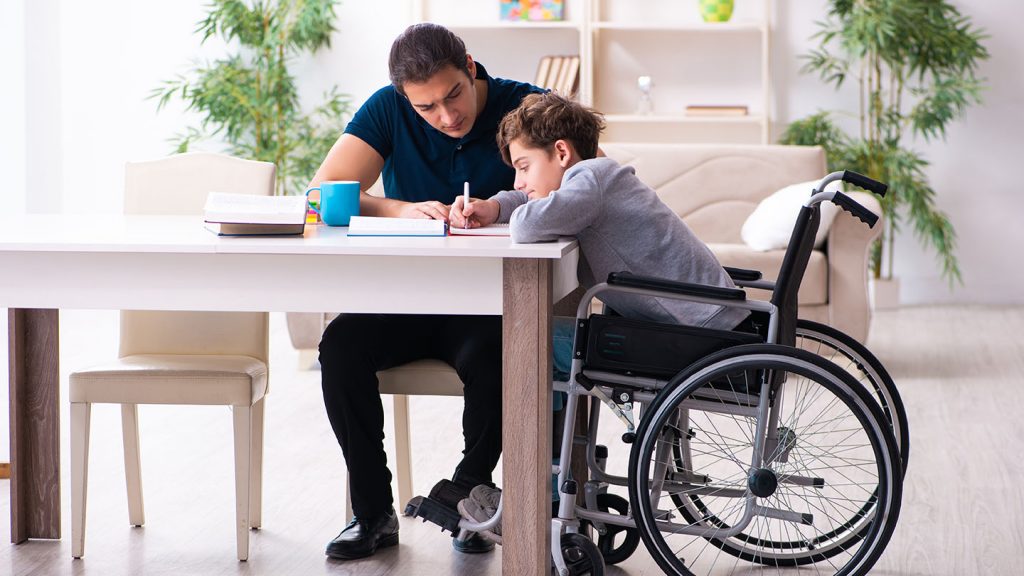What does disability mean, in the workplace and during the pandemic?
Author: You Wu

For most people, the term “disability” equals the loss of mobility. A poor man in a movie who has lost his legs and arms in an accident or war and lives in shadow and hopelessness is a representative of disabled people in most people’s minds. However, disability is far more complex than movies and indeed not so far away from us. Since 2011, over one billion people are suffering from different disabilities, and 2-4% of them have significant functioning difficulties (WHO, 2011). The disability is not confined to “visible impairment”. Not only physical, but mental and intellectual impairment can be a haunting ghost – depression, anxiety, and Down’s syndrome can disrupt people’s routine and also fade their future.
In a movie, there is always a helpful person in the next corner, waiting to warm the miserable disabled person, become his friend, and they will walk into their bright future hand in hand. But we all know that our life is not like a movie – fortune cookie comments only help the movie characters. For the disabled, they face their own predicament: while they are at a higher risk of poverty due to higher expenses on health care and daily costs (Banks et al., 2020), their impairment limits their participation in activities and routine life, especially, working.
Contrary to the common belief, most disabled people desire to be employed and work just like able-bodied people: in fact, their occupational preference is nearly the same as able-bodied people’s (Ali, 2011). Nonetheless, not surprisingly, the disabled still face a lower employment rate and wage compared to their counterparts without disability (WHO, 2011; Kruse et al., 2018). Such differences cannot be totally attributed to their lower level of education or working performance and productivity as someone might presume. A study has shown that the wage gap cannot be fully explained by the difference in productivity (Kruse et al., 2018). For disabled people whose disabilities should not limit their productivity, the pay gap indicates potential discrimination (Kruse et al., 2018). Furthermore, the employment rate and lower wages do not reflect the whole image. Disabled people also perceive injustice and discrimination in job assignments and career development (Flores et al. 2017). Their disadvantaged positions might pose a potential threat to their lives as they face higher living costs and usually lack a financial cushion.
During the pandemic, the economic crisis renders them more vulnerable to job loss. As people can imagine, the disabled are often the last candidates and the first leavers in their workplaces. While many disabled people are worrying about possible job losses because of the pandemic, others have already been fired and found that reemployment is especially difficult for them (Fitzsimmons, 2020; Newman, 2021). Unfortunately, the crisis always hits the hardest.
Besides the losses, however, the pandemic also offers us new insights to help disabled people in their work. Amid the pandemic, we witness how our technology offers great convenience and flexibility to our learning and working habits. The remote working environment can be reserved to reduce the working difficulty and costs for disabled people. Advances in online education also offer them more opportunities to develop and prove themselves in an easier way, winning them an edge in job–seeking. Our experience during the pandemic has proven one thing: if there is anything that hinders the improvement in disabled people’s lives, it is not the deficiency in our ability to help, but our lack of willingness.
References:
Ali, M., Schur, L., & Blanck, P. (2011). What Types of Jobs Do People with Disabilities Want? J Occup Rehabil, 21, 199-210. doi: 10.1007/s10926-010-9266-0
Banks, L. M., Davey, C., Shakespeare, T. & Kuper, H. (2020). World Development, 137, 105178-105181. https://doi.org/10.1016/j.worlddev.2020.105178
Fitzsimmons, A. (2020, May 5). Global Disability Inclusion Survey Reports People with Disabilities Are More Negatively Affected by The Economic Impact of COVID-19. Global Disability Inclusion. https://www.prnewswire.com/news-releases/global-disability-inclusion-survey-reports-people-with-disabilities-are-more-negatively-affected-by-the-economic-impact-of-covid-19-301052873.html
Flores, M. V., Valle, R. & Barrachina, M. B. (2017). Perceptions of discrimination and distributive injustice among people with physical disabilities: In jobs, compensation and career development. Personnel Review, 46(3), 680-698. doi: 10.1108/PR-04-2015-0098
Kruse, D., Schur, L., Rogersand, S., & Ameri, M. (2018). Why Do Workers with Disabilities Earn Less? Occupational Job Requirements and Disability Discrimination. British Journal of Industrial Relations, 56(4), 798–834. doi: 10.1111/bjir.1225756:4
Newman, A. (2021, March 5). “I Really Loved My Job”: Why the Pandemic Has Hit These Workers Harder. The New York Times. https://www.nytimes.com/2021/03/05/nyregion/workers-disabilities-unemployment-covid.html
World Health Organization. (2011). World Report On Disability 2011. https://www.who.int/teams/noncommunicable-diseases/sensory-functions-disability-and-rehabilitation/world-report-on-disability